Service Alert
Le 1 juillet, Fête du Canada
À l’occasion de la Fête du Canada, le CAÉB sera fermé le mardi 1 juillet. Les heures d’opération régulières reprendront le mercredi 2 juillet. Nous vous souhaitons un bon congé!
À l’occasion de la Fête du Canada, le CAÉB sera fermé le mardi 1 juillet. Les heures d’opération régulières reprendront le mercredi 2 juillet. Nous vous souhaitons un bon congé!
Articles 1499661 à 1499680 sur 1500239
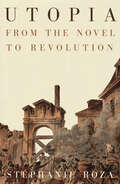
Par Stéphanie Roza. 2025
THE TRANSFORMATION OF UTOPIA IN THE FRENCH REVOLUTION, FROM A ROMANTIC IDEAL TO A POLITICAL OBJECTIVEUntil the Age of Enlightenment,…
utopia was a popular literary genre, but without concrete political effects. However, in the decades leading up to 1789, its status gradually changed from an entertaining thought experiment to a socialist project. Imagining the ideal city took on the task of articulating revolutionary transformation of society towards equality and social justice.In Utopia, Stéphanie Roza explores the nascent ideal of a community of property and labour, not yet called communism, and the thinkers who engaged with it in the lead-up to the French Revolution. These philosophers included Étienne-Gabriel Morelly, a fierce critic of private property and the mysterious author of the Code de la Nature; the Abbé de Mably, a radical republican and interlocutor of Rousseau; and Gracchus Babeuf, who, from the 1780s onwards, defended the natural right to subsistence and dreamed of a more fraternal world.Together, they laid the foundations for modern socialist movements. In the crucible of the French Revolution, &‘real equality&’ became the goal of a handful of conspirators gathered around Babeuf, who had meanwhile become the &‘tribune of the people&’. The Conspiracy of Equals was considered by Marx to be &‘the first active communist party&’: the hopes and questions that ran through the group prefigured those of the militants of later periods, including today.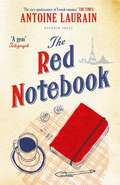
Par Antoine Laurain. 2014
Described as &“Parisian perfection&” by Queen Camilla, you won&’t want to miss this charming, quirky love story from one of…
the UK's favourite French authors!In this bestselling novel, a bookseller pursues a mystery woman—known only through the jottings in her red notebook—through the streets of ParisBookseller Laurent Letellier comes across an abandoned handbag on a Parisian street, and feels compelled to return it to its owner. Quickly ruling out the police station, which is always best avoided, he turns the contents out onto his kitchen table to see if they hold a clue. The bag contains no money, phone or contact information. But it does yield a small red notebook, full of handwritten thoughts and jottings that reveal someone Laurent would very much like to meet. From the lists of likes and dislikes, things noticed and things felt, emerges the portrait of a woman who might just be his soulmate.But without even a name to go on, and only a few of her possessions to help him, how is he to find one woman in a city of millions? He&’ll have to turn to his daughter, who helps him decode the possessions and sends him on a madcap journey around the French capital.Meanwhile, in an anonymous hospital room, fragmentary thoughts float through the mind of a woman in a coma. She thinks she&’s called Laure, and she has some strong opinions and painful memories – but will she ever wake up and get a fresh chance at life?Soaked in Parisian atmosphere, this lovely, clever, funny novel is the perfect French holiday read!
Par Camilla Trinchieri. 2025
Ex-NYPD detective Nico Doyle finds himself unwittingly stepping into the role of a PI to investigate a murder that has…
torn a young family apart in this rustic mystery set in the beautiful Medieval village of Pitigliano, Italy.One morning at his favorite café, Nico Doyle notices Cilia, a seven-year-old girl he has never seen before, frolicking with his dog on the floor. He later discovers she has left a note in his collar—Please help my babbo.With help from the local carabinieri, Nico discovers that Cilia&’s father, Saverio, has fled town following an unfortunate incident. His business partner was killed at their electronics store, and Saverio is the hot-headed local carabiniere&’s main suspect. Cilia&’s mother, Livia, who just moved to Gravigna to get away from Pitigliano&’s wagging tongues, asks Nico to find the real killer and hands him a long list of suspects. Against his better judgment, Nico accepts for Cilia&’s sake. Since the case is outside of the local carabinieri&’s jurisdiction, Nico finds himself on his own as he travels back and forth to Pitigliano. He goes down Livia&’s list of suspects one by one in pursuit of the truth, putting his skills as a retired NYPD detective to work. But will Livia and her little girl be happy with what Nico finds?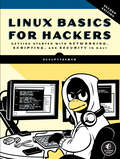
A revised introduction to the Linux operating system for beginning hackers and penetration testers.If you&’re just getting started along the…
exciting path of hacking, cybersecurity, and pentesting, Linux Basics for Hackers is an excellent introduction. With Kali Linux, an operating system designed for digital forensics and penetration testing, you&’ll learn the basics of using Linux and acquire the tools and techniques you&’ll need to take control of a Linux environment.First, you&’ll learn how to install Kali on a virtual machine and get an introduction to basic Linux concepts. Next, you&’ll tackle broader Linux topics like manipulating text, controlling file and directory permissions, and managing user environment variables. You&’ll then focus on foundational hacking concepts like security and anonymity and learn scripting skills with bash and Python. Practical tutorials and exercises throughout will reinforce and test your skills as you learn how to:Cover your tracks by changing your network information and manipulating the journalctl logging utilityWrite a tool to scan for network connections, and connect and listen to wireless networksKeep your internet activity stealthy using Tor, proxy servers, VPNs, and encrypted emailWrite a bash script to find potential attack targets over a range of IP addressesUse and abuse services like MySQL, the Apache web server, and OpenSSHBuild your own hacking tools, such as remote spy cameras and password crackersNew to this edition: This second edition has been updated to address recent changes to Kali and Linux, including a more secure approach to root privileges, updates to Bluetooth and Linux logging functions, and a new chapter with advice on AI in cybersecurity.Hacking is complex, and there is no single way in. Why not start at the beginning with Linux Basics for Hackers?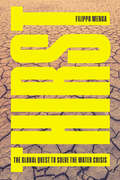
Par Filippo Menga. 2025
A groundbreaking account of the worsening global water crisis corporations and non-profits have failed to addressTwo billion people worldwide are…
without access to safe water. But solutions are hard to come by when causes are not clearly defined. In a whirlwind tour of global water insecurity, one of the world&’s leading experts on water politics chronicles the massive impact of climate change; insatiable water demands from industry and agriculture; and widespread lack of state investment in infrastructure. Menga focuses in particular on high priests of global developmentalism – celebrities, CEOs, and sustainability directors – who have emerged as some of the loudest voices about water issues while offering few tangible solutions. Thirst shows that if humanity is to escape the deadlock that bedevils access to clean water, it has to reconsider both its faith in the market and its relationship with nature.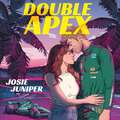
Par Josie Juniper. 2024
'A spicy must-read for F1 fans and STEM nerds!' Abby Jimenez, New York Times bestselling authorPhaedra Morgan is one of…
the best race engineers in Formula 1. She's a math prodigy with dazzling skill, cutting wit, and no patience for matters of the heart. Of course, her job would be a lot easier if she didn't keep butting heads with their team's cocky and infuriatingly hot new driver. Cosmin Ardelean is intense and committed, but as famous for his off-track romantic exploits as his on-track wizardry. Yet his devil-may-care façade conceals a haunted past. When the pair strikes up a secret-and thrillingly forbidden-"arrangement" to improve their communication and bond of trust, the heat of their attraction turns to something more . . . But no secret stays hidden for long in the racing world, and soon things are spinning out of control. With everything on the line, will they be able to strip away all their defenses and go full throttle for a chance at love?This first book in a spicy Formula 1 romance series pairs a STEM-inist engineer with a cocky racecar driver, perfect for fans of Drive to Survive on Netflix and readers of Hannah Grace and Sarah Adams.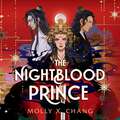
'Beautifully written and brimming with defiance' Xiran Jay Zhao, bestselling author of Iron Widow Two princes. One prophecy. A fate…
she cannot outrun. The night Fei was born, a prophecy was made: she would one day become the Empress of All Empresses. Torn from her family as a child and raised in the palace to one day marry the Crown Prince of the most powerful empire in the land, Fei has only ever known loneliness. When the opportunity arises to seize her own destiny for the first time in her life, Fei sets out to hunt a legendary tiger, knowing it might cost her everything. What she doesn't expect is to fall under the mercy of Yexue, the beautiful runaway prince from a rival kingdom. Blessed by the night, harbouring a dangerous magic, and capable of commanding an army of deadly vampires, Yexue could be the key to Fei gaining more than just her freedom. But to outrun destiny, Fei must spark a wave of events that will change the world as she knows it. Torn between two princes and plagued by nightmares of bloodshed, she finds that the stars might be more inescapable - and more irresistible - than she ever considered before . . .Two kingdoms on the brink of battle. One prophesied empress to unite them, who finds herself caught between two princes and the fact that love alone may not stop the coming war. A thrilling YA romantasy from the #1 Sunday Times bestselling author of To Gaze Upon Wicked Gods.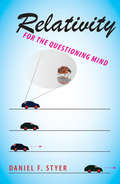
Par Daniel F. Styer. 2011
To those of us who are not mathematicians or physicists, Einstein’s theory of relativity often seems incomprehensible, exotic, and of…
little real-world use. None of this is true. Daniel F. Styer’s introduction to the topic not only shows us why these beliefs are mistaken but also shines a bright light on the subject so that any curious-minded person with an understanding of algebra and geometry can both grasp and apply the theory.Styer starts off slowly and proceeds carefully, explaining the concepts undergirding relativity in language comprehensible to nonscientists yet precise and accurate enough to satisfy the most demanding professional. He demonstrates how the theory applies to various real-life situations with easy equations and simple, clear diagrams. Styer's classroom-tested method of conveying the core ideas of relativity—the relationship among and between time, space, and motion and the behavior of light—encourages questions and shows the way to finding the answers. Each of the book’s four parts builds on the sections that come before, leading the reader by turn through an overview of foundational ideas such as frames of reference, revelatory examples of time dilation and its attendant principles, an example-based exploration of relativity, and explanations of how and why gravity and spacetime are linked. By demonstrating relativity with practical applications, Styer teaches us to truly understand and appreciate its importance, beauty, and usefulness.Featuring worked and end-of-chapter problems and illustrated, nontechnical explanations of core concepts, while dotted throughout with questions and answers, puzzles, and paradoxes, Relativity for the Questioning Mind is an enjoyable-to-read, complete, concise introduction to one of the most important scientific theories yet discovered. The appendixes provide helpful hints, basic answers to the sample problems, and materials to stimulate further exploration.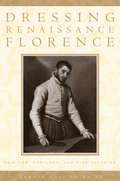
As portraits, private diaries, and estate inventories make clear, elite families of the Italian Renaissance were obsessed with fashion, investing…
as much as forty percent of their fortunes on clothing. In fact, the most elaborate outfits of the period could cost more than a good-sized farm out in the Mugello. Yet despite its prominence in both daily life and the economy, clothing has been largely overlooked in the rich historiography of Renaissance Italy. In Dressing Renaissance Florence, however, Carole Collier Frick provides the first in-depth study of the Renaissance fashion industry, focusing on Florence, a city founded on cloth, a city of wool manufacturers, finishers, and merchants, of silk dyers, brocade weavers, pearl dealers, and goldsmiths. From the artisans who designed and assembled the outfits to the families who amassed fabulous wardrobes, Frick's wide-ranging and innovative interdisciplinary history explores the social and political implications of clothing in Renaissance Italy's most style-conscious city.Frick begins with a detailed account of the industry itself—its organization within the guild structure of the city, the specialized work done by male and female workers of differing social status, the materials used and their sources, and the garments and accessories produced. She then shows how the driving force behind the growth of the industry was the elite families of Florence, who, in order to maintain their social standing and family honor, made continuous purchases of clothing—whether for everyday use or special occasions—for their families and households. And she concludes with an analysis of the clothes themselves: what pieces made up an outfit; how outfits differed for men, women, and children; and what colors, fabrics, and design elements were popular. Further, and perhaps more basically, she asks how we know what we know about Renaissance fashion and looks to both Florence's sumptuary laws, which defined what could be worn on the streets, and the depiction of contemporary clothing in Florentine art for the answer.For Florence's elite, appearance and display were intimately bound up with self-identity. Dressing Renaissance Florence enables us to better understand the social and cultural milieu of Renaissance Italy.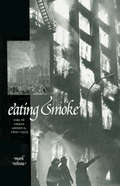
Par Mark Tebeau. 2004
During the period of America's swiftest industrialization and urban growth, fire struck fear in the hearts of city dwellers as…
did no other calamity. Before the Civil War, sweeping blazes destroyed more than $200 million in property in the nation's largest cities. Between 1871 and 1906, conflagrations left Chicago, Boston, Baltimore, and San Francisco in ruins. Into the twentieth century, this dynamic hazard intensified as cities grew taller and more populous, confounding those who battled it. Firefighters' death-defying feats captured the popular imagination but too often failed to provide more than symbolic protection. Hundreds of fire insurance companies went bankrupt because they could not adequately deal with the effects of even smaller blazes.Firefighters and fire insurers created a physical and cultural infrastructure whose legacy—in the form of heroic firefighters, insurance policies, building standards, and fire hydrants—lives on in the urban built environment. In Eating Smoke, Mark Tebeau shows how the changing practices of firefighters and fire insurers shaped the built landscape of American cities, the growth of municipal institutions, and the experience of urban life. Drawing on a wealth of fire department and insurance company archives, he contrasts the invention of a heroic culture of firefighters with the rational organizational strategies by fire underwriters. Recognizing the complexity of shifting urban environments and constantly experimenting with tools and tactics, firefighters fought fire ever more aggressively—"eating smoke" when they ventured deep into burning buildings or when they scaled ladders to perform harrowing rescues. In sharp contrast to the manly valor of firefighters, insurers argued that the risk was quantifiable, measurable, and predictable. Underwriters managed hazard with statistics, maps, and trade associations, and they eventually agitated for building codes and other reforms, which cities throughout the nation implemented in the twentieth century. Although they remained icons of heroism, firefighters' cultural and institutional authority slowly diminished. Americans had begun to imagine fire risk as an economic abstraction.By comparing the simple skills employed by firefighters—climbing ladders and manipulating hoses—with the mundane technologies—maps and accounting charts—of insurers, the author demonstrates that the daily routines of both groups were instrumental in making intense urban and industrial expansion a less precarious endeavor.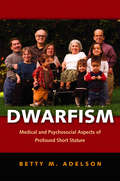
Par Betty M. Adelson. 2005
This landmark volume is the first to trace the exciting developments in the field of dwarfism research and treatment over…
the past century—particularly during the past fifty years. Dr. Betty M. Adelson, a psychologist, has unearthed and synthesized the most significant information about dwarfing conditions, from articles written a century ago to current books and specialized databases. Highlighting the outstanding contributions of Dr. Victor McKusick and several of his colleagues, Dr. Adelson reveals how dwarfism specialists have helped redefine the nature of medical care—transforming it from an authoritarian enterprise into a holistic, collaborative venture among physicians, affected individuals, and their families. The parent of an adult dwarf daughter, Adelson examines the social forces that affect the dwarfism community. She offers personal descriptions of the day-to-day challenges dwarf individuals face and portrays their accomplishments. Insightful and accessible, this work will prove a valuable resource for affected individuals, their families, and medical professionals—physicians, nurses, genetic counselors, social workers, psychologists, and medical students.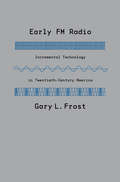
Par Gary L. Frost. 2010
The commonly accepted history of FM radio is one of the twentieth century’s iconic sagas of invention, heroism, and tragedy.…
Edwin Howard Armstrong created a system of wideband frequency-modulation radio in 1933. The Radio Corporation of America (RCA), convinced that Armstrong’s system threatened its AM empire, failed to develop the new technology and refused to pay Armstrong royalties. Armstrong sued the company at great personal cost. He died despondent, exhausted, and broke. But this account, according to Gary L. Frost, ignores the contributions of scores of other individuals who were involved in the decades-long struggle to realize the potential of FM radio. The first scholar to fully examine recently uncovered evidence from the Armstrong v. RCA lawsuit, Frost offers a thorough revision of the FM story. Frost’s balanced, contextualized approach provides a much-needed corrective to previous accounts. Navigating deftly through the details of a complicated story, he examines the motivations and interactions of the three communities most intimately involved in the development of the technology—Progressive-era amateur radio operators, RCA and Westinghouse engineers, and early FM broadcasters. In the process, Frost demonstrates the tension between competition and collaboration that goes hand in hand with the emergence and refinement of new technologies. Frost's study reconsiders both the social construction of FM radio and the process of technological evolution. Historians of technology, communication, and media will welcome this important reexamination of the canonic story of early FM radio.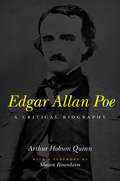
Par Arthur Hobson Quinn. 1998
Now in paperback—the classic, monumental biography of Poe by Arthur Hobson Quinn.Renowned as the creator of the detective story and…
a master of horror, the author of "The Red Mask of Death," "The Black Cat," and "The Murders of the Rue Morgue," Edgar Allan Poe seems to have derived his success from suffering and to have suffered from his success. "The Raven" and "The Tell-Tale Heart" have been read as signs of his personal obsessions, and "The Fall of the House of Usher" and "The Descent into the Maelstrom" as symptoms of his own mental collapse. Biographers have seldom resisted the opportunities to confuse the pathologies in the stories with the events in Poe's life. Against this tide of fancy, guesses, and amateur psychologizing, Arthur Hobson Quinn's biography devotes itself meticulously to facts. Based on exhaustive research in the Poe family archive, Quinn extracts the life from the legend, and describes how they both were distorted by prior biographies.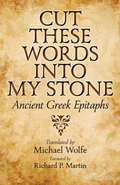
Par Michael Wolfe. 2013
The lively ancient epitaphs in this bilingual collection fit together like small mosaic tiles, forming a vivid portrait of Greek…
society.Cut These Words into My Stone offers evidence that ancient Greek life was not only celebrated in great heroic epics, but was also commemorated in hundreds of artfully composed verse epitaphs. They have been preserved in anthologies and gleaned from weathered headstones.Three-year-old Archianax, playing near a well,Was drawn down by his own silent reflection.His mother, afraid he had no breath left,Hauled him back up wringing wet. He had a little.He didn't taint the nymphs' deep home.He dozed off in her lap. He's sleeping still.These words, translated from the original Greek by poet and filmmaker Michael Wolfe, mark the passing of a child who died roughly 2,000 years ago. Ancient Greek epitaphs honor the lives, and often describe the deaths, of a rich cross section of Greek society, including people of all ages and classes— paupers, fishermen, tyrants, virgins, drunks, foot soldiers, generals—and some non-people—horses, dolphins, and insects. With brief commentary and notes, this bilingual collection of 127 short, witty, and often tender epigrams spans 1,000 years of the written word. Cut These Words into My Stone provides an engaging introduction to this corner of classical literature that continues to speak eloquently in our time.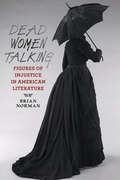
Par Brian Norman. 2013
Dead women speak as agents of social justice in work by some of the best-known writers of American literature.Brian Norman…
uncovers a curious phenomenon in American literature: dead women who nonetheless talk. These characters appear in works by such classic American writers as Poe, Dickinson, and Faulkner as well as in more recent works by Alice Walker, Toni Morrison, Tony Kushner, and others. These figures are also emerging in contemporary culture, from the film and best-selling novel The Lovely Bones to the hit television drama Desperate Housewives. Dead Women Talking demonstrates that the dead, especially women, have been speaking out in American literature since well before it was fashionable. Norman argues that they voice concerns that a community may wish to consign to the past, raising questions about gender, violence, sexuality, class, racial injustice, and national identity. When these women insert themselves into the story, they do not enter precisely as ghosts but rather as something potentially more disrupting: posthumous citizens. The community must ask itself whether it can or should recognize such a character as one of its own. The prospect of posthumous citizenship bears important implications for debates over the legal rights of the dead, social histories of burial customs and famous cadavers, and the political theory of citizenship and social death.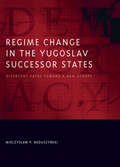
Par Mieczysław P. Boduszyński. 2010
In the 1990s, amid political upheaval and civil war, the Socialist Federal Republic of Yugoslavia dissolved into five successor states.…
The subsequent independence of Montenegro and Kosovo brought the total number to seven. Balkan scholar and diplomat to the region Mieczyslaw P. Boduszynski examines four of those states—Croatia, Slovenia, Macedonia, and the Federal Republic of Yugoslavia—and traces their divergent paths toward democracy and Euro-Atlantic integration over the past two decades.Boduszynski argues that regime change in the Yugoslav successor states was powerfully shaped by both internal and external forces: the economic conditions on the eve of independence and transition and the incentives offered by the European Union and other Western actors to encourage economic and political liberalization. He shows how these factors contributed to differing formulations of democracy in each state.The author engages with the vexing problems of creating and sustaining democracy when circumstances are not entirely supportive of the effort. He employs innovative concepts to measure the quality of and prospects for democracy in the Balkan region, arguing that procedural indicators of democratization do not adequately describe the stability of liberalism in post-communist states. This unique perspective on developments in the region provides relevant lessons for regime change in the larger post-communist world. Scholars, practitioners, and policymakers will find the book to be a compelling contribution to the study of comparative politics, democratization, and European integration.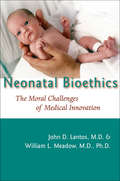
Par John D. Lantos, William L. Meadow. 2007
Neonatal intensive care has been one of the most morally controversial areas of medicine during the past thirty years. This…
study examines the interconnected development of four key aspects of neonatal intensive care: medical advances, ethical analysis, legal scrutiny, and econometric evaluation.The authors assert that a dramatic shift in societal attitudes toward newborns and their medical care was a stimulus for and then a result of developments in the medical care of newborns. They divide their analysis into three eras of neonatal intensive care. The first, characterized by the rapid advance of medical technology from the late 1960s to the Baby Doe case of 1982, established neonatal care as a legitimate specialty of medical care, separate from the rest of pediatrics and medicine. During this era, legal scholars and moral philosophers debated the relative importance of parental autonomy, clinical prognosis, and children's rights. The second era, beginning with the Baby Doe case (a legal battle that spurred legislation mandating that infants with debilitating birth defects be treated unless the attending physician deems efforts to prolong life "futile"), stimulated efforts to establish a consistent federal standard on neonatal care decisions and raised important moral questions concerning the meaning of "futility" and of "inhumane" treatment. In the third era, a consistent set of decision-making criteria and policies was established. These policies were the result of the synergy and harmonization of newly agreed upon ethical principles and newly discovered epidemiological characteristics of neonatal care.Tracing the field's recent history, notable advances, and considerable challenges yet to be faced, the authors present neonatal bioethics as a paradigm of complex conversation among physicians, philosophers, policy makers, judges, and legislators which has led to responsible societal oversight of a controversial medical innovation.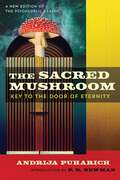
Par Andrija Puharich. 2025
• Shares the author&’s research on extrasensory perception (ESP) and the psychic effects of hallucinogenic mushrooms• Describes ancient Egyptian spiritual…
practices centered on Amanita muscaria (fly agaric) mushrooms• Details the author&’s research work with R. Gordon Wasson and his experiments with Aldous Huxley and famed psychic Peter HurkosIn 1954, neurologist Andrija Puharich, M.D., receives a call from a wealthy supporter of his lab about an unusual subject worthy of further research: Harry Stone, a young sculptor with unusually acute extrasensory perception. When handed an ancient Egyptian artifact, Harry had fallen into a deep trance, drawing hieroglyphic symbols, including mushrooms, and using ancient Egyptian phrases to describe a drug that can enhance psychic abilities.Intrigued, Dr. Puharich studies Harry&’s trance-induced statements and discovers that they are clearly describing ancient spiritual practices involving Amanita muscaria (fly agaric) mushrooms. He begins direct investigations with Harry at his lab in Maine, learning more about the use and preparation of the sacred mushroom as well as about astral travel and past lives. Dr. Puharich shares his research with ethnomycologist R. Gordon Wasson, who is about to travel to Mexico on a CIA-funded research trip, and the two researchers agree to test telepathic communications between the lab in Maine and a Mexican curandero. The results of the psychic experiment lead Puharich to discover Amanita muscaria growing in the wild near his research facility.Now with a supply of the sacred mushroom, Dr. Puharich begins to study its psychic and visionary potential and the veracity of Harry Stone&’s channeled Egyptian statements. He studies the effects of Amanita muscaria not only on Harry, but also on famed psychic Peter Hurkos and other visitors to his lab, including Aldous Huxley. This book reveals all the details of that story in this new edition of the psychedelic classic. It also includes an in-depth introduction by psychedelic historian P. D. Newman.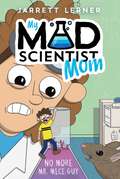
Par Jarrett Lerner. 2025
Ari helps a neighbor who accidentally gets shrunk by Ari&’s mom&’s latest invention in this second book in the My…
Mad Scientist Mom chapter book series from acclaimed author-illustrator Jarrett Lerner.Ari&’s life is filled with school, video games, and his pet turtle, Fred: pretty run-of-the mill stuff. But not anywhere near run-of-the-mill is Ari&’s mom, who&’s a mad scientist. That&’s right, a MAD scientist. Sure, she strives to make people&’s lives better with her inventions, especially at home. But all of Mom&’s inventions seem to go just the slightest bit off kilter. His mom puts a new invention to the test to help clean up the clutter in their house: a magnimizer, which can shrink or enlarge anything! Pretty amazing, right? Well, not if you happen to be Mr. Jakes, their neighbor who comes face to face with this gizmo and becomes the size of a cockroach—and a potential tasty morsel for the resident basement mouse! Can Ari save the day and teeny-weeny Mr. Jakes?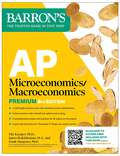
Par Frank Musgrave, Elia Kacapyr, James Redelsheimer M.A., Barron'S Educational Series. 2024
Be prepared for exam day with Barron&’s. Trusted content from AP experts! Barron&’s AP Microeconomics/Macroeconomics Premium, Eighth Edition includes in‑depth…
content review and practice. It&’s the only book you&’ll need to be prepared for exam day. Written by Experienced Educators Learn from Barron&’s‑‑all content is written and reviewed by AP experts Build your understanding with comprehensive review tailored to the most recent exams Get a leg up with tips, strategies, and study advice for exam day‑‑it&’s like having a trusted tutor by your side Be Confident on Exam Day Sharpen your test‑taking skills with 4 full‑length practice tests–1 AP Micro exam and 1 AP Macro exam in the book, and 1 additional AP Micro exam and 1 additional AP Macro exam online–plus detailed answer explanations for all questions Strengthen your knowledge with in‑depth review covering all units on the AP Microeconomics exam and the AP Macroeconomics exam Determine your strengths and areas for improvement by taking pretests (that cover frequently tested topics) for both subjects Reinforce your learning with multiple-choice and free-response review questions at the end of each chapter, all accompanied by clear answers and explanations and graphs where needed to better illustrate key concepts Robust Online Practice Continue your practice with 1 full-length AP Micro practice test and 1 full-length AP Macro practice test on Barron&’s Online Learning Hub Simulate the exam experience with a timed test option Deepen your understanding with detailed answer explanations and expert advice Gain confidence with scoring to check your learning progress Strengthen your vocabulary with additional terms and their definitions by chapter for both Microeconomics and Macroeconomics. Publisher's Note: Products purchased from 3rd party sellers are not guaranteed by the publisher for quality, authenticity, or access to any online entities included with the product.